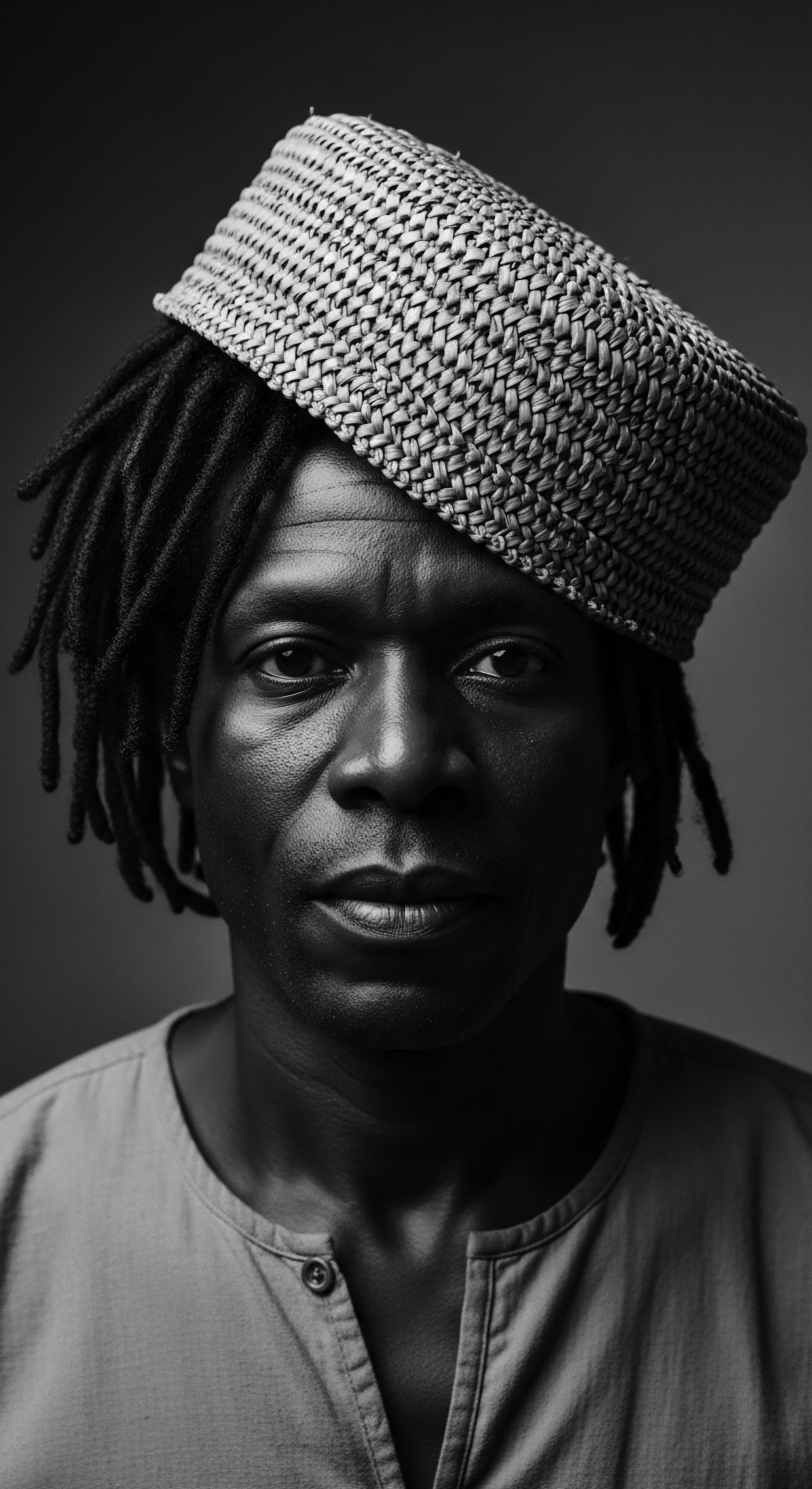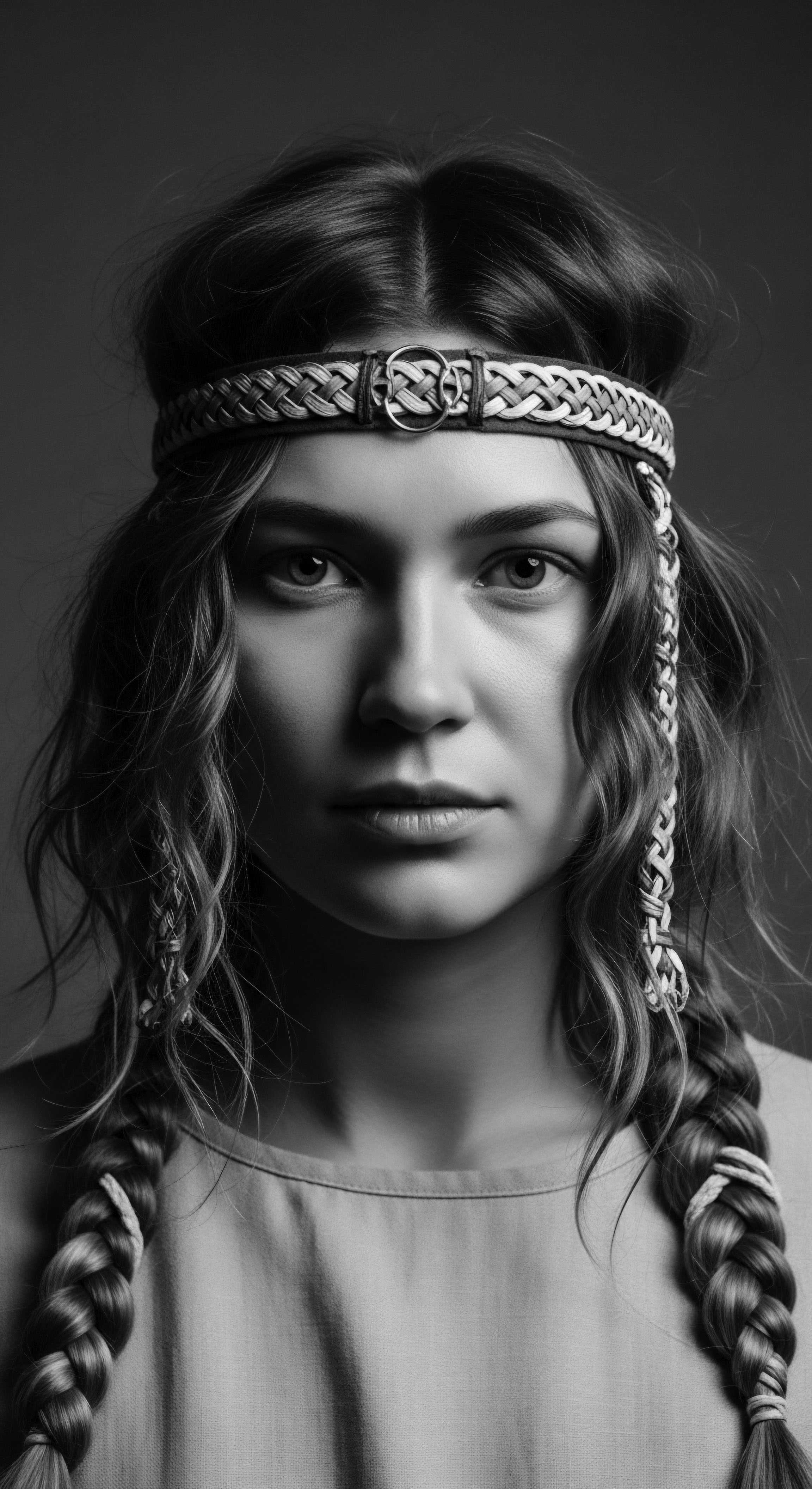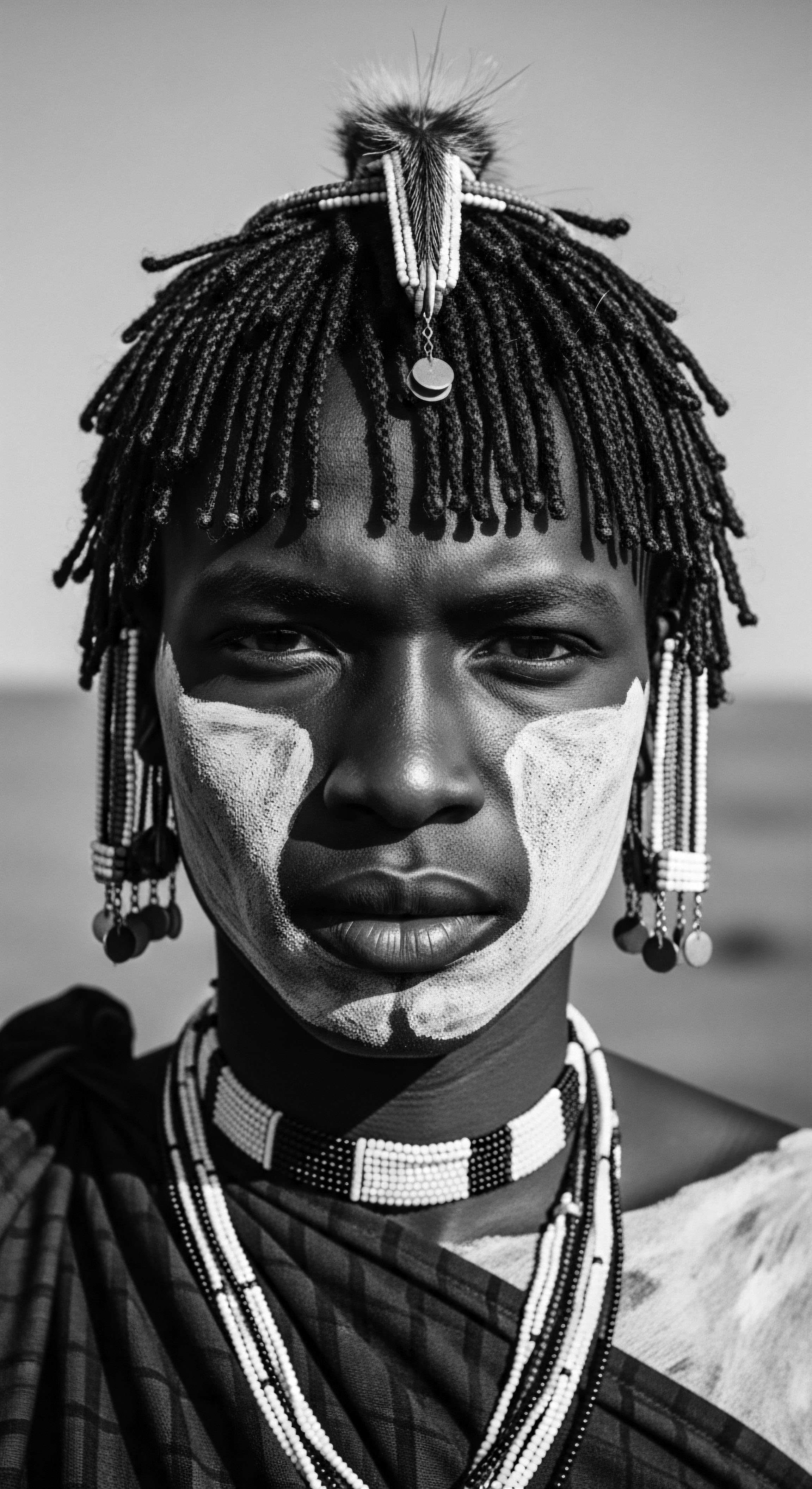
Fundamentals
The term Traditional African Plants, within Roothea’s ‘living library,’ refers to the diverse botanical species indigenous to the African continent that have been utilized for millennia across its myriad cultures for holistic wellness, spiritual practices, and importantly, for the care and adornment of hair. This definition is not merely a botanical classification; it is an explanation steeped in the ancestral wisdom passed through generations, where these plants represent a profound connection to the earth and its restorative capacities. The designation of these plants carries a significance that extends beyond their chemical composition, speaking to their historical role in shaping identities and communal bonds, particularly within textured hair heritage.
At its core, the interpretation of Traditional African Plants for hair care acknowledges their role as foundational elements in pre-colonial and diasporic beauty regimens. These are not novel discoveries but rather time-honored remedies, deeply woven into the fabric of daily life and ceremonial practices. Their continued presence in modern hair care formulations often pays homage to these original applications, allowing a contemporary appreciation for ancient solutions. The designation of these plants is thus an invitation to consider a legacy of care that predates industrialization, a legacy built on the intuitive understanding of nature’s bounty.

The Earth’s First Apothecary for Hair
Across the vast expanse of Africa, from the arid savannas to the lush rainforests, various communities identified and applied specific plants for their hair-benefiting properties. These plants were the original pharmacopoeia for textured hair, providing cleansing, conditioning, strengthening, and protective benefits long before synthetic compounds existed. The wisdom surrounding their selection and preparation was often localized, with specific tribes or regions having distinct botanical knowledge passed down through oral traditions and practical demonstration. This knowledge formed a critical part of a community’s shared heritage, safeguarding the health and symbolic meaning of hair.
Traditional African Plants represent an ancestral blueprint for hair care, a testament to the enduring wisdom of indigenous communities.
The initial understanding of these plants was often empirical, observing how specific leaves, barks, roots, or seeds interacted with the scalp and hair strands. This observational learning, refined over countless generations, led to sophisticated systems of natural hair care. For instance, certain plants were known for their saponin content, acting as gentle cleansers, while others provided rich emollients that sealed moisture into coiled and kinky textures, preventing dryness and breakage. The essence of these plants, in their raw and unadulterated form, offered a direct conduit to the earth’s regenerative powers.

Simple Beginnings, Deep Roots
For those new to the concept, understanding Traditional African Plants begins with recognizing them as direct gifts from the land, utilized with respect and intention. Their initial applications were straightforward, yet their impact was profound. They were not merely ingredients; they were extensions of a philosophy that viewed hair as a vital part of the self, deserving of deliberate, natural care. The clarity in their purpose—to maintain health, vitality, and cultural significance—remains a guiding principle.
Consider the foundational plants often cited in early African hair care ❉
- Shea Butter Tree ( Vitellaria paradoxa ) ❉ Its nuts yield a rich, unrefined butter, historically used across West Africa to moisturize, protect from sun and wind, and condition hair, making it pliable for styling.
- Chebe Plant ( Croton zambesicus ) ❉ Utilized by Chadian Basara women, this plant’s powdered seeds, when mixed with oils, create a paste that strengthens hair, reduces breakage, and promotes length retention.
- Aloe Vera ( Aloe barbadensis miller ) ❉ Found widely, its gel-like pulp has been used for centuries to soothe the scalp, provide moisture, and promote healthy hair growth.
- Neem Tree ( Azadirachta indica ) ❉ While often associated with South Asia, various species of Neem are indigenous to parts of Africa, with its leaves and oil used for their antifungal and antibacterial properties, beneficial for scalp health.
The early understanding of these plants formed the bedrock of hair care systems that valued strength, resilience, and the inherent beauty of textured hair. This initial delineation provides a gateway into a much deeper historical and cultural exploration of their meaning.

Intermediate
Moving beyond the foundational understanding, the intermediate meaning of Traditional African Plants involves a more granular examination of their applications, the rituals that accompanied their use, and their role in communal life and identity formation. This interpretation acknowledges that these plants were not isolated remedies but integral components of comprehensive hair care systems, deeply embedded within the social and spiritual frameworks of various African societies. The specification of their use often transcended mere aesthetics, serving as a conduit for ancestral connection and cultural expression.
The methods of preparing and applying these botanical treasures speak volumes about the ingenuity and meticulousness of ancestral practices. Plant parts—leaves, barks, roots, seeds, flowers—were dried, pounded, steeped, fermented, or infused into oils, creating potent elixirs tailored to specific hair needs. This process of transformation, from raw plant material to a nourishing hair treatment, often involved communal effort, fostering bonds and transmitting knowledge from elder to youth. The delineation of these practices reveals a profound respect for the plant world and an intimate understanding of its properties.

Rituals of Renewal and Connection
Hair care with Traditional African Plants was frequently a ritualistic endeavor, not merely a utilitarian task. These practices were often imbued with spiritual significance, performed during rites of passage, before significant life events, or as part of daily routines that honored the self and community. The meaning of these rituals was multilayered, connecting individuals to their lineage, their community, and the spiritual realm. The act of cleansing, oiling, or styling hair with these plants became a moment of introspection and communal bonding.
The preparation and application of Traditional African Plants were often sacred rituals, deepening connections to lineage and community.
For instance, the application of certain plant-based clays or pastes was sometimes part of protective rituals, believed to ward off negative energies or prepare an individual for a new phase of life. The careful crafting of hairstyles, often requiring the pliability afforded by plant-derived emollients, could communicate social status, marital availability, or tribal affiliation. The importance of these practices for communal identity cannot be overstated; they were living expressions of cultural heritage.

The Science of Ancestral Practice ❉ Beyond Observation
While early applications were empirical, the consistent efficacy of Traditional African Plants points to an intuitive, often sophisticated, understanding of phytochemistry. Ancestral practitioners observed and cataloged the effects of various plant components, discerning which offered cleansing properties, which provided moisture, and which possessed strengthening capabilities. This practical knowledge, accumulated over generations, represents an early form of botanical science. The intention behind their use was not random but informed by a deep, inherited wisdom.
Consider the systematic approach to utilizing Traditional African Plants ❉
- Cleansing Agents ❉ Plants like Rhassoul Clay (from the Atlas Mountains) or various soapberries were used to gently cleanse hair and scalp without stripping natural oils, a precursor to modern low-poo or co-wash methods.
- Conditioning and Moisturizing ❉ Ingredients such as Baobab Oil ( Adansonia digitata ) and Marula Oil ( Sclerocarya birrea ) were prized for their rich fatty acid profiles, providing deep conditioning and moisture retention for textured hair.
- Strengthening and Growth ❉ Plants like Moringa ( Moringa oleifera ) were used for their vitamin and mineral content, believed to nourish hair follicles and promote robust growth, reducing breakage.
- Protective Barriers ❉ Certain plant resins or butters created a protective layer against environmental stressors, essential for maintaining hair health in diverse climates.
| Plant or Component Shea Butter |
| Traditional Preparation Nuts roasted, pounded, kneaded with water to separate butter. |
| Common Hair Application Melted and massaged into hair and scalp as a moisturizer, sealant, and styling aid. |
| Plant or Component Chebe Powder |
| Traditional Preparation Seeds dried, roasted, ground into a fine powder. |
| Common Hair Application Mixed with oils (e.g. Karkar oil) to form a paste, applied to hair strands (avoiding scalp) and left on for extended periods. |
| Plant or Component Aloe Vera |
| Traditional Preparation Fresh leaves cut, gel extracted. |
| Common Hair Application Gel applied directly to scalp to soothe irritation, or to hair as a detangler and moisturizer. |
| Plant or Component African Black Soap |
| Traditional Preparation Plantain peels, cocoa pods, shea tree bark, palm tree leaves sun-dried and roasted into ash, mixed with oils. |
| Common Hair Application Diluted with water to create a gentle, clarifying shampoo for hair and scalp. |
| Plant or Component These methods highlight a deep understanding of natural chemistry and a dedication to hair wellness grounded in ancestral wisdom. |
The intermediate understanding of Traditional African Plants underscores their active role in fostering hair health, protecting delicate textures, and preserving cultural identity across generations. It moves beyond a simple identification to a deeper appreciation of the knowledge systems that supported their use.

Academic
The academic definition and meaning of Traditional African Plants, particularly concerning textured hair heritage, transcends anecdotal observation to engage with rigorous ethnobotanical, anthropological, and biochemical analyses. This delineation positions these botanical entities not merely as ingredients, but as critical conduits through which cultural identity, historical resilience, and ancestral knowledge are transmitted and sustained. The specification of their role demands a multidisciplinary lens, examining their phytochemistry alongside their socio-cultural significance, thereby providing a comprehensive exploration of their impact on Black and mixed-race hair experiences.
From an academic standpoint, Traditional African Plants represent a vast, often under-documented, pharmacopeia of natural compounds with specific efficacy for the unique structural and physiological characteristics of textured hair. The meaning of their continued relevance lies in the validation of long-standing traditional practices through modern scientific inquiry, which frequently reveals the presence of bioactive compounds responsible for observed benefits such as moisture retention, elasticity enhancement, and scalp health. This scholarly interpretation aims to bridge the chasm between indigenous knowledge systems and contemporary scientific understanding, revealing a profound historical continuum of care.

Ethnobotanical Lineages and Hair as Cultural Text
Ethnobotany, the study of the relationship between people and plants, offers a powerful framework for understanding Traditional African Plants. It allows for a detailed examination of how specific plant species were identified, cultivated, harvested, and prepared within distinct cultural contexts, often for precise applications in hair care. This academic pursuit goes beyond cataloging plants; it investigates the cultural narratives, belief systems, and social structures that dictated their use.
Hair, in many African societies, served as a potent visual language, conveying complex information about an individual’s status, age, marital state, or spiritual affiliations. The plants used to prepare and maintain these elaborate coiffures were therefore not just cosmetic aids but integral to the “reading” of this cultural text.
Academically, Traditional African Plants are cultural archives, their usage patterns revealing complex socio-spiritual meanings embedded in hair.
Consider the profound example of the Dogon People of Mali, whose intricate hair rituals and styles are deeply intertwined with their cosmological beliefs. Marcel Griaule’s seminal ethnography, Conversations with Ogotemmêli (1965), while not exclusively focused on hair, provides a window into the Dogon’s complex understanding of the universe, where even the structure of a granary can mirror the human body and its spiritual connections. Within this worldview, hair is not merely a biological appendage; it is a conduit for spiritual energy and a physical manifestation of an individual’s place within the cosmic order. The maintenance of specific Dogon hairstyles, which can be elaborate braided patterns or sculpted forms, necessitates the use of indigenous plant-based preparations.
These concoctions, often comprising local oils, clays, and herbal infusions, are applied not just for their conditioning or strengthening properties, but for their perceived spiritual efficacy in maintaining the integrity of the hair as a sacred extension of the self. The precise application of these botanical agents, passed down through generations, ensures the pliability and resilience of the hair, allowing for the creation and preservation of styles that symbolize significant life stages or communal roles. For instance, the use of specific oils derived from local trees ensures the hair remains supple enough to be meticulously braided into symbolic forms, while certain plant-based clays might be applied to set and protect these styles, reinforcing their longevity and visual statement. This practice underscores how Traditional African Plants are not just utilitarian but are imbued with deep philosophical and spiritual meaning, acting as tangible links to a rich ancestral heritage that views hair as a living, speaking part of the individual and the collective.
(Griaule, 1965). The long-term consequence of this integration is the preservation of a holistic worldview where nature, spirituality, and personal identity are inextricably linked through daily practices.

The Phytochemistry of Textured Hair Care
From a biochemical perspective, the effectiveness of Traditional African Plants for textured hair is increasingly being elucidated through scientific analysis. The unique structure of coiled and kinky hair, characterized by its elliptical shape, fewer cuticle layers, and multiple twists along the strand, makes it particularly susceptible to dryness and breakage. Many Traditional African Plants contain compounds that directly address these vulnerabilities.
For instance, the high concentration of fatty acids (like oleic, linoleic, and stearic acids) in butters such as Shea Butter ( Vitellaria paradoxa ) provides exceptional emollience, sealing moisture into the hair shaft and reducing transepidermal water loss from the scalp. This explains its long-standing use as a protective sealant in West African communities. Similarly, the saponins found in plants like African Black Soap ingredients (e.g. cocoa pods, plantain peels) offer gentle cleansing properties without stripping the hair’s natural lipids, preserving its delicate moisture balance.
Furthermore, certain Traditional African Plants possess antioxidant, anti-inflammatory, and antimicrobial properties. The leaves of the Moringa Tree ( Moringa oleifera ), for example, are rich in vitamins, minerals, and amino acids, which can nourish hair follicles and promote a healthy scalp environment, crucial for robust hair growth in textured hair. The mucilage found in plants like Okra ( Abelmoschus esculentus ) or certain types of Hibiscus creates a slippery, detangling effect, simplifying the often challenging process of managing highly textured strands and reducing mechanical damage.
The sustained use of these plants, therefore, provides a consistent, gentle approach to hair care that aligns with the inherent needs of textured hair, promoting its strength and vitality over a lifetime. The success insights from these long-term applications demonstrate a profound, inherited understanding of natural compounds.

Diasporic Adaptations and Enduring Significance
The transatlantic slave trade, while attempting to strip enslaved Africans of their cultural identity, could not entirely sever the connection to ancestral hair practices. In the diaspora, Traditional African Plants, or their botanical analogues found in new lands, became symbols of resistance and continuity. Enslaved Africans adapted their knowledge, substituting familiar plants with those available, often creating new traditions that still echoed the original reverence for hair and natural care. This historical continuity underscores the enduring significance of these plants as anchors of identity and resilience.
The study of these adaptations reveals how African botanical knowledge was not static but dynamic, capable of transformation and survival across vast geographical and cultural divides. The long-term consequences of this forced migration, paradoxically, led to a broader dissemination and reinterpretation of African hair care principles, demonstrating the profound adaptability of ancestral wisdom.
- Adaptation of Ingredients ❉ When original plants were unavailable, similar botanical properties were sought in local flora. For instance, the use of flaxseed in the Americas for hair gel, mirroring the mucilage properties of certain African plants.
- Preservation of Rituals ❉ Despite oppressive conditions, the act of communal hair braiding and care, often involving rudimentary plant-based preparations, continued as a vital act of self-preservation and cultural memory.
- Symbolic Resistance ❉ Maintaining natural hair, often aided by Traditional African Plant-derived products, became a quiet but powerful act of defiance against imposed beauty standards.
The academic examination of Traditional African Plants thus reveals them as more than just biological entities; they are living repositories of cultural heritage, scientific ingenuity, and enduring human spirit, profoundly shaping the narrative of textured hair across continents and centuries. Their definition is constantly enriched by ongoing research into their chemical properties and the historical contexts of their use.

Reflection on the Heritage of Traditional African Plants
The journey through the meaning and significance of Traditional African Plants for textured hair care is more than an academic exercise; it is a gentle whisper from the past, a resonant echo from the very Soul of a Strand. These botanical allies are not simply historical artifacts; they are living testaments to an enduring heritage, a continuous thread connecting ancestral wisdom to contemporary expressions of beauty and wellness. They invite us to pause, to listen to the rustle of leaves that once graced the hands of our foremothers, to feel the rich earth that nurtured these powerful healers.
The exploration of these plants compels us to reconsider our relationship with hair, moving beyond fleeting trends to a deeper appreciation of its historical and cultural weight. Each plant, each traditional method, speaks of a time when care was intentional, when connection to the earth was paramount, and when hair was a sacred canvas for identity and belonging. The very existence of these practices, surviving centuries of upheaval and displacement, underscores the profound resilience of Black and mixed-race hair heritage.
As we continue to rediscover and integrate the wisdom of Traditional African Plants into our modern routines, we are not merely adopting ingredients; we are participating in a timeless ritual of self-care and cultural affirmation. We are honoring the ingenuity of those who came before us, validating their knowledge, and ensuring that the stories held within each strand of textured hair continue to be told, cherished, and celebrated. This living library, Roothea’s sacred archive, stands as a beacon, guiding us back to the source, back to the inherent beauty and strength that has always resided within our hair and our heritage.

References
- Griaule, M. (1965). Conversations with Ogotemmêli ❉ An Introduction to Dogon Religious Ideas. Oxford University Press.
- Akerele, O. Heywood, V. & Synge, H. (1991). The Conservation of Medicinal Plants. Cambridge University Press.
- Ejimofor, C. (2008). The African Hair Revolution ❉ An Historical and Cultural Journey. Black Classic Press.
- Karanja, M. (2002). African Hair ❉ Its Cultural and Historical Significance. Africa World Press.
- Adjanohoun, E. J. et al. (1989). Traditional Medicine and Pharmacopoeia ❉ Contribution to Ethnobotanical and Floristic Studies in West Africa. Organization of African Unity Scientific, Technical and Research Commission.
- Diala, N. (2012). Hair Story ❉ Untangling the Roots of Black Hair in America. St. Martin’s Press.
- Opoku, R. (2008). African Traditional Medicine ❉ A Cultural and Scientific Perspective. Nova Science Publishers.
- Porter, D. (2014). The Social History of Hair ❉ Culture, Fashion, and Identity. Berg.
- Abubakar, S. (2019). Ethnobotanical Survey of Medicinal Plants Used for Hair Care in Northern Nigeria. Journal of Medicinal Plants Research, 13(10), 119-126.
- Thibodeaux, A. (2019). In Search of Our Roots ❉ How Black Hair Has Shaped America. University of Georgia Press.
